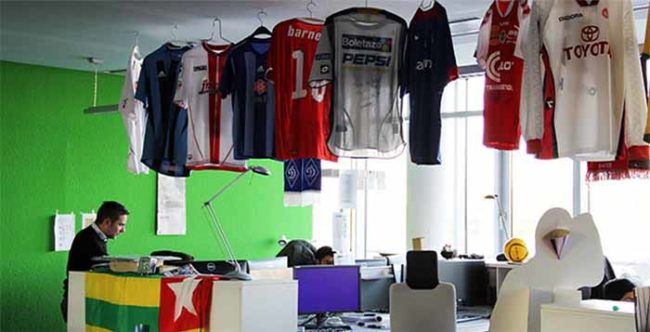Creating digital versions of the best footballers in the world for FIFA is a process that takes time, energy and effort. Collecting this data and updating it each week is a mammoth task, but it is only by doing this that authentic results can be ensured in the final game. Niels Diekmann, who works in the Data Collection and Licensing Group out of our Cologne office in Germany, explains in this short interview how FIFA Data is collected.
Interview – How is FIFA Data Collected ?
Q: Hi Niels! What’s your job at EA?
A: I am assistant producer in the FIFA Data Collection and Licensing Group. My main duties are the management of the data for the German Bundesliga and providing database support for FIFA Online 3, a popular variant of the game which is played primarily in Korea and Southeast Asia.
Q: What does a day look like for your team?
A: In a normal week, we deliver online updates on Monday and Tuesday, including data for the “FUT Team of the Week”. We also handle the submission of game data from the previous weekend. By Thursday, we complete our data for our largest online update, which contains all changes to player and team data.
Q: What is the structure of the DCL Team?
A: Over a dozen producers and software engineers currently work here at the office in Cologne, and we also have colleagues in various roles in Vancouver, Guildford and Bucharest. We have team members from all over the world, from Australia to Italy, Pakistan and the Ukraine.
Q: Could you describe how a player’s attributes are adjusted over time?
A: It depends a lot on the value in question. To update an individual attribute of a well-known player, usually one of the editors responsible will handle — after meticulous observation of the player, of course. I then check the change once more before it finds its way into the game.
As for the Player Overall Rating (OVR), it naturally changes as a result of the individual attributes which are used to calculate its value. Theoretically, a player could experience frequent changes without his OVR changing.

Q: How do you ensure objectivity?
A: Primarily, we rely on the “wisdom of the many”, in that we are continuously expanding our community. Should the many reviewers and editors ever happen to overlook a value that is too optimistic or pessimistic, there’s still us, the producers, who verify the values with our knowledge and a lot of time and patience.
Q: How can players get involved to help with attributes?
A: Anyone can apply to join!
On the FIFA Talent Scout website, you can sign up and provide some basic info. If chosen, candidates start off as reviewers and work on a voluntary basis. The best reviewers eventually become editors, who are then paid for their contributions to the database.
Q: How did you join the FIFA team?
A: I had contact with Gerald Köhler as a teenager, who at the time was the lead designer for the football management simulation “On the Ball” (German title: Anstoss).
After completing my degree, I got my foot in the door by completing an internship under his supervision (at the time for EA SPORTS FIFA Manager). After a short stint at a software company in Ireland I joined the DCL Team.
Q: How often do you watch games?
A: On average, I watch 4–5 complete games a week (including international matches) as well as all the highlights I can get my hands on. Slightly less in weeks with international matches.
Q: What advice can you give to someone who aspires to a career in the games industry?
A: A good way to get started in production or game design is definitely internships. They allow you to find out quickly if the work is really what you want to do.
Overall, there are a lot of people from other fields who have worked their way up from the position of a tester. A programming background or basic knowledge in this area is also something that can’t hurt on your resume.
